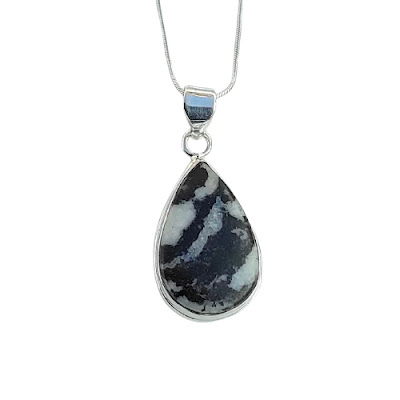Why Castanets are the Perfect Addition to Your Percussion Instrument Collection
Are you tired of the same old percussion instruments in your collection? Looking to add a unique and lively element to your sound? Look no further than castanets! These small, hand-held instruments have been used in traditional Spanish music for centuries, but they're not just limited to flamenco. In this blog post, we'll explore why castanets are the perfect addition to any percussionist's repertoire and how they can elevate your performances to new heights. So grab your clappers and let's get started!
Introduction: What Are Castanets & How Do They Work?
Castanets are percussion instruments that have been used for centuries in a variety of music genres. Though their origins are unknown, it is believed that they were first used in ancient Greece. These instruments are typically made of two hardwood clappers that are connected by a string or cord. The clappers are held in the hand and struck together to create a sharp, staccato sound.
Castanets are most commonly associated with Spanish music, specifically flamenco. They are also popular in Latin American music, as well as certain types of folk and traditional music from around the world. While they can be played on their own, castanets are often used in conjunction with other percussion instruments, such as drums or cymbals.
Whether you’re a seasoned musician or a complete beginner, this instrument can be a great addition to your percussion instrument collection. They’re relatively inexpensive and easy to find, and they offer a unique sound that can add flavor to any musical performance.
The Benefits of Castanets
There are many benefits to playing castanets. They help improve coordination and motor skills, and they can also be used as a form of therapy. It can be played by people of all ages and abilities, making them a great addition to any percussion instrument collection.
Castanets help improve coordination and motor skills because they require the use of both hands. This helps develop hand-eye coordination and fine motor skills. Playing this instrument helps develop cognitive skills such as memory, attention, and problem-solving.
Castanets can also be used as a form of therapy. They can help relieve stress, anxiety, and depression. Castanets can also help improve sleep quality and reduce pain levels.
Baby Music Classes at Rhythmrumble
If you're looking for a fun and educational activity for your little one, look no further than Rhythmrumble's baby music classes! Our classes are designed to introduce babies and toddlers to the world of music, and we use a variety of instruments to do so. Castanets are one of our favorite percussion instruments to use in our classes, as they are the perfect size for little hands and make a great noise!
In our baby music classes, your child will have the opportunity to explore a variety of sounds and rhythms. We'll start with some simple songs and games that will get them moving and shaking their castanets. As they become more comfortable with the instrument, we'll introduce more complex rhythms and melodies. By the end of the class, your child will be making beautiful music that you can enjoy together!
Different Types of Castanets
Castanets are a percussion instrument that consists of two hardwood shells attached by a string. The shells are held in the hand and struck together to create a sharp, clacking sound. These are often used in pairs, with one held in each hand.
There are many different types of instruments available, each with its own unique sound and appearance. Some of the most popular types include:
-Flamenco: These instruments have a wide, rounded shape and produce a loud, sharp sound. They are the most popular type of castanet and are often used in Spanish music and dance.
-Opera: These instruments have a narrower, more elongated shape and produce a softer, more delicate sound. They are commonly used in opera and other classical music genres.
-Piccolo: These instruments have an even narrower shape than opera castanets and produce an even softer sound. They are often used as an accent instrument in orchestras and other ensembles.
Techniques for Playing Castanets
Castanets are a percussion instrument that originated in Spain. They are typically made of wood or plastic and consist of two halves that are held in the hand and struck together.
There are a variety of techniques that can be used to play these intruments. The most common is to hold the instrument in one hand and strike the two halves together with the other hand. This produces a sharp, staccato sound.
Another technique is to hold the instruments in one hand and strike them against each other. This produces a softer, more mellow sound.
Still another option is to hold the instrument in one hand and use the thumb of the other hand to strike them. This produces a very sharp, piercing sound.
Some players prefer to rest the instruments on lap and strike them with their hands or with sticks. This produces a louder, more resonant sound.
No matter which technique you use, playing the instrument is sure to add an energetic and festive flair to your music!
Tips and Tricks for Practicing with Castanets
If you're looking for a new percussion instrument to add to your collection, castanets are a great option. They're relatively inexpensive and easy to find, and they offer a unique sound that can add a lot of variety to your music.
Here are some tips and tricks for practicing with castanets:
1. Start by holding the instrument in your dominant hand. Place your thumb in the top loop and your first two fingers in the bottom loops.
2. Experiment with different ways of striking the instruments together. You can use an open-handed technique, where you let the instrument collide together naturally, or a closed-handed technique, where you use your fingers to snap them shut.
3. Practice keeping a consistent rhythm. One way to do this is to count out loud as you play. This will help you keep track of the beat and make sure your strikes are evenly spaced.
4. Try playing along with some music. Castanets can be used to accentuate certain beats or rhythms in a song. Pay attention to the parts of the song where the instrument would fit in best and practice matching your playing to the tempo of the music.
5. Don't be afraid to experiment with different sounds. Castanets can produce a wide range of tones, from gentle clicks to loud clacks. See what kinds of sounds you can create by striking them harder or softer, or using
Conclusion
Castanets are the perfect addition to any percussion instrument collection. Their unique sound and their small size make them a great way to add depth and texture to your music. They are also relatively easy to learn, so even beginners can master the basics quickly. With some practice, you'll be able to make beautiful music with castanets in no time!




Comments
Post a Comment